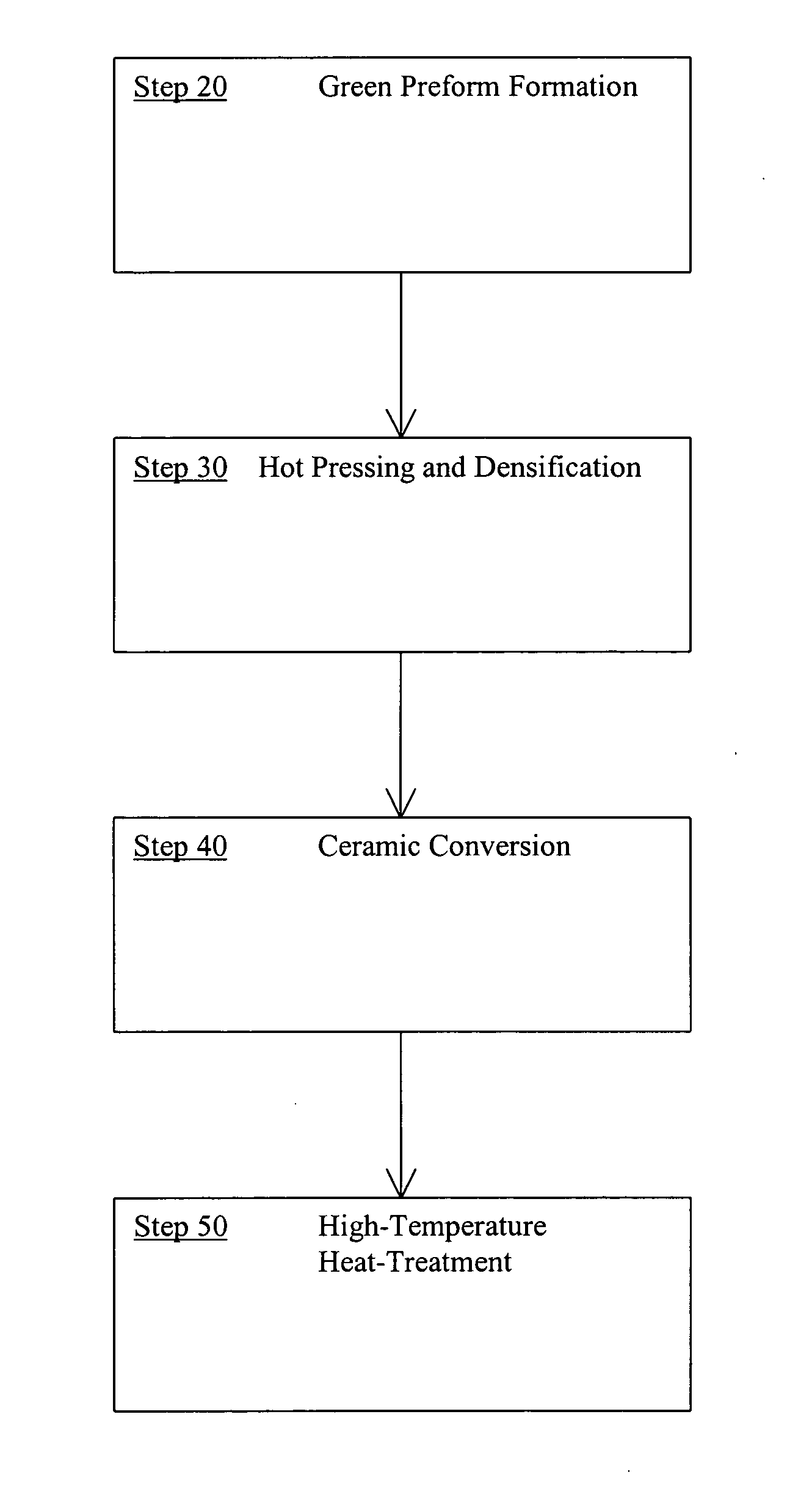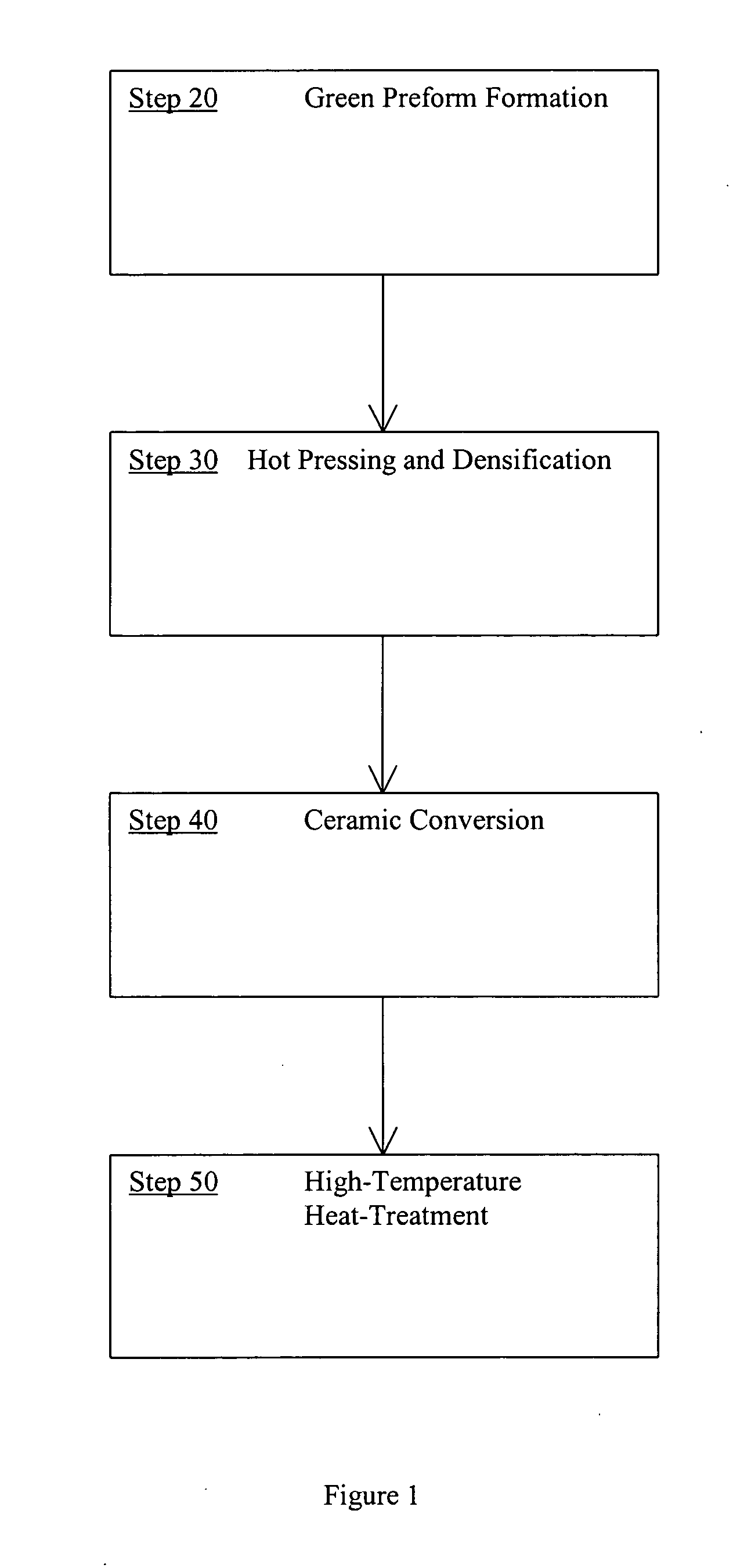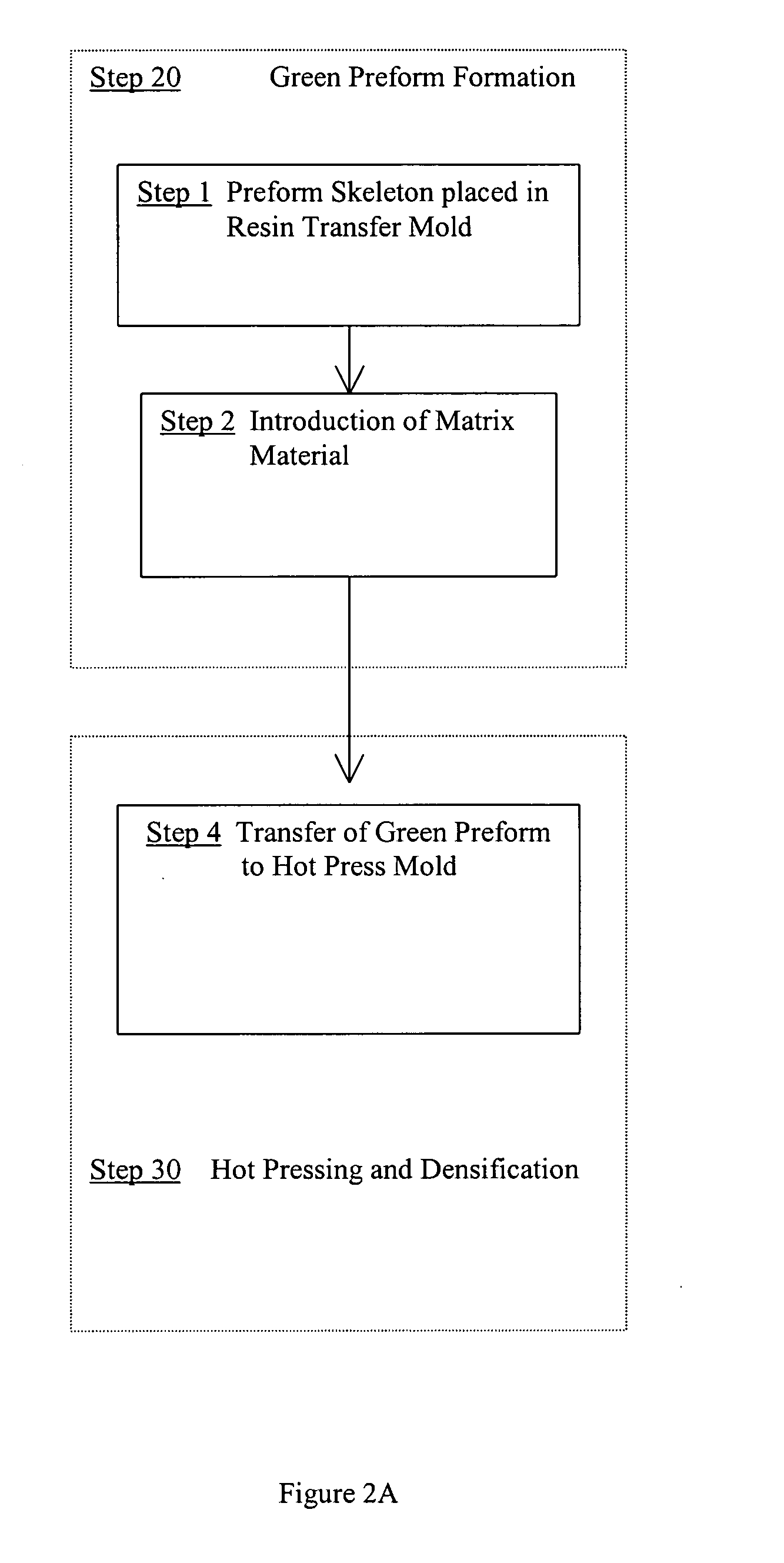Manufacturing carbon fiber reinforced ceramics as brake discs
a technology of carbon fiber reinforced ceramics and brake discs, which is applied in the direction of friction linings, mechanical devices, actuators, etc., can solve the problems of difficult manufacturing without defects, time-consuming and expensive, and difficult methods of reliable friction-bearing ceramic structures, so as to preserve the superior thermal conductivity and mechanical properties of carbon fiber, the effect of sic/c bonding greater degr
- Summary
- Abstract
- Description
- Claims
- Application Information
AI Technical Summary
Benefits of technology
Problems solved by technology
Method used
Image
Examples
Embodiment Construction
[0021] A method of forming a CFRC material suitable for use in thermal structural applications, such as friction components, is provided by impregnating an at least partially carbonized carbon / carbon composite preform with a pre-ceramic polymer. The pre-ceramic polymer impregnated carbon / carbon composite is then heat-treated so that the pre-ceramic polymer is pyrolytically decomposed. Finally, the carbon / ceramic composite preform is high-temperature heat treated so as to form a carbon fiber reinforced ceramic body.
[0022] The carbon / carbon composite material is formed by resistance heating of a mixture of a carbon-based reinforcement material, such as carbon fibers, and a matrix material, such as powdered pitch. The resistive heating step is accompanied by application of mechanical pressure to density the mixture. After hot-pressing, the compressed composite or “preform” is preferably subjected to one or more cycles of infiltration and baking steps employing a carbonizable resin, pi...
PUM
| Property | Measurement | Unit |
|---|---|---|
| temperature | aaaaa | aaaaa |
| temperature | aaaaa | aaaaa |
| temperature | aaaaa | aaaaa |
Abstract
Description
Claims
Application Information
 Login to View More
Login to View More - R&D
- Intellectual Property
- Life Sciences
- Materials
- Tech Scout
- Unparalleled Data Quality
- Higher Quality Content
- 60% Fewer Hallucinations
Browse by: Latest US Patents, China's latest patents, Technical Efficacy Thesaurus, Application Domain, Technology Topic, Popular Technical Reports.
© 2025 PatSnap. All rights reserved.Legal|Privacy policy|Modern Slavery Act Transparency Statement|Sitemap|About US| Contact US: help@patsnap.com



